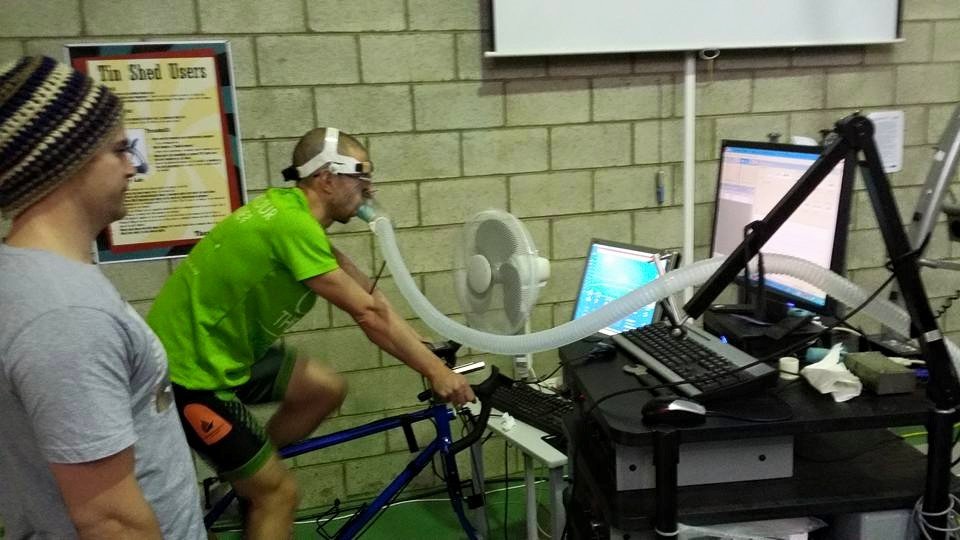
The above image is a picture of me performing a VO2Max test through the University of Ballarat in Australia.
It was pretty easy today to pick the subject in the Running ABC's. Today we have the letter V for VO2Max.
Simply put VO2Max is the maximum amount of Oxygen an individual can consume when working as hard as you can. The standard measurement of VO2Max is in terms of milliliters of oxygen per kilogram of body mass per minute(ml/kg/min). It will usually be a two digit number from about 30 which is common for a sedentary male to over 80 for a professional athlete. The two digit number such as 30, stands for 30 ml/kg/min.
The higher your VO2Max the larger amount of blood your body is able to pump your circulatory system, and your muscles can efficiently use.
VO2Max is not the final word on predicting running ability, but it is a contributing factor. It may be interesting to note that elite marathon runners will usually have a lower VO2Max than elite middle distance runners, due to the maximum amount of oxygen you can deliver to your muscles starts to be less important for longer distances.
VO2Max is Specific For Sport
You need to remember you will have a different VO2Max value for different sports. Your VO2Max for swimming will be different to your running or cycling or rowing VO2Max. With sports that the the athlete is not supporting their body weight like rowing, you will usually refer to your VO2Max as your absolute value. This is the 2 digit value we have been discussing so far. For a runner that needs to support their own body weight, relative VO2Max value is more important. This is simply your body weight divided by your absolute value.
Ways to get tested for VO2Max
To get your VO2Max value measured you can go to a sports science lab as I did in the image above to get an accurate test on a treadmill or stationary bike. There are ways to get these values on your own. The first is a beep test(https://www.topendsports.com/testing/tests/20mshuttle.htm), the second which is lesser known is the Cooper 12 minutes test(https://bootcampmilitaryfitnessinstitute.com/run/the-cooper-vo2-max-test/). Both tests have you running for a certain period of time with the results being able to be matched against values to then predict your VO2Max.
After my VO2Max test, I performed a beep test with a personal training and we were able to verify the laboratory test within 1%, so even though they are more low tech, they are still work doing.
Measurements of Active and Inactive People
VO2Max values change with age and with gender. The images below provide value ranges for both men and women over various ages.
The above image is a table of mens values by age and fitness level
The above image is a table of womens values by age and fitness levels
Ways to Improve Your VO2Max
In simplest terms interval training with bouts of high intensity runs, following by a sufficient recovery period, has been shown to be the best way to improve your VO2Max levels. I will leave it at that for now, and post another article with some more examples of specifically training your VO2Max.
Even though it's not the single determining factor in running speed, VO2Max testing is a great way to test and track your fitness to make sure you are progressing as your training is progressing. There is no need to get a lab test to get an idea of your specific VO2Max value.
If you missed any of the previous five posts, you can see them at the following link:
@run.vince.run/in-the-running-abc-s-q-is-for
@run.vince.run/in-the-running-abc-s-r-is-for-recovery
@run.vince.run/s-is-for-stretching-in-our-running-abc-s
@run.vince.run/in-the-running-abc-s-t-is-for-training-mask
@run.vince.run/in-our-running-abc-s-u-is-for-ultramarathon
If you have found this post useful or interesting, please consider Commenting, Upvoting, Following and/or Resteeming @run.vince.run
